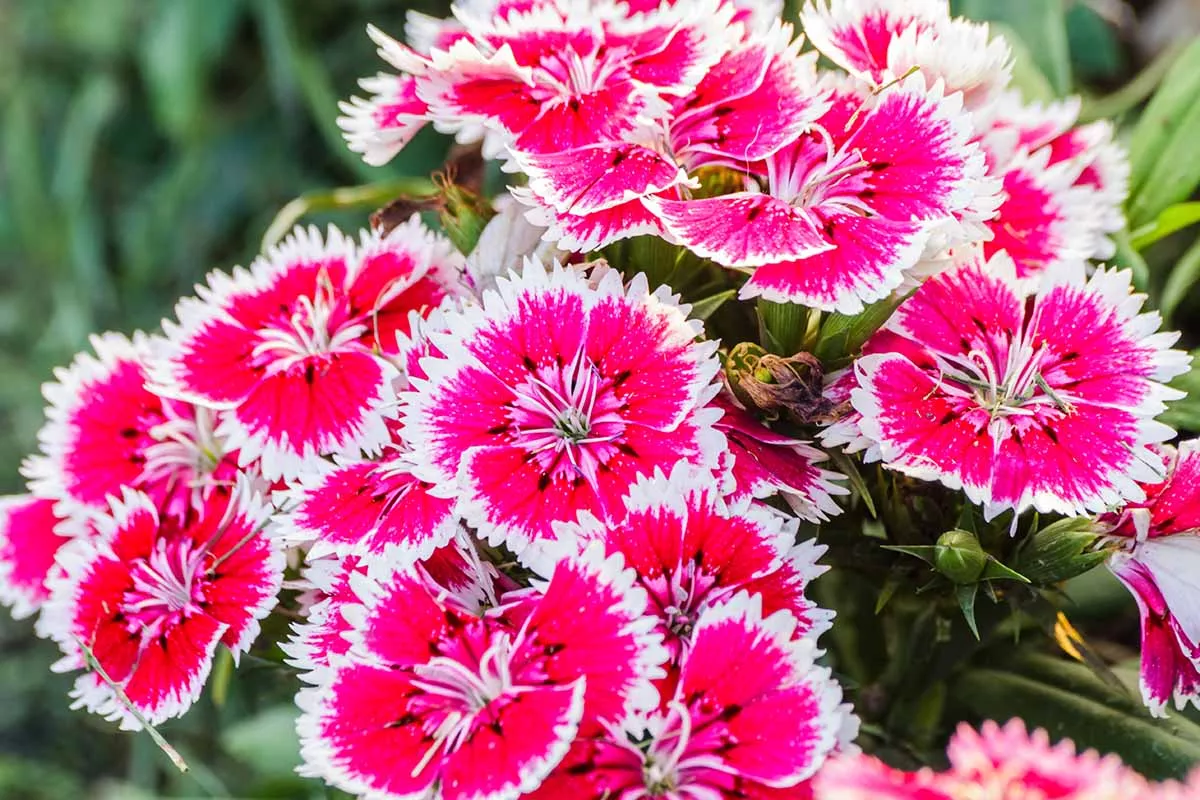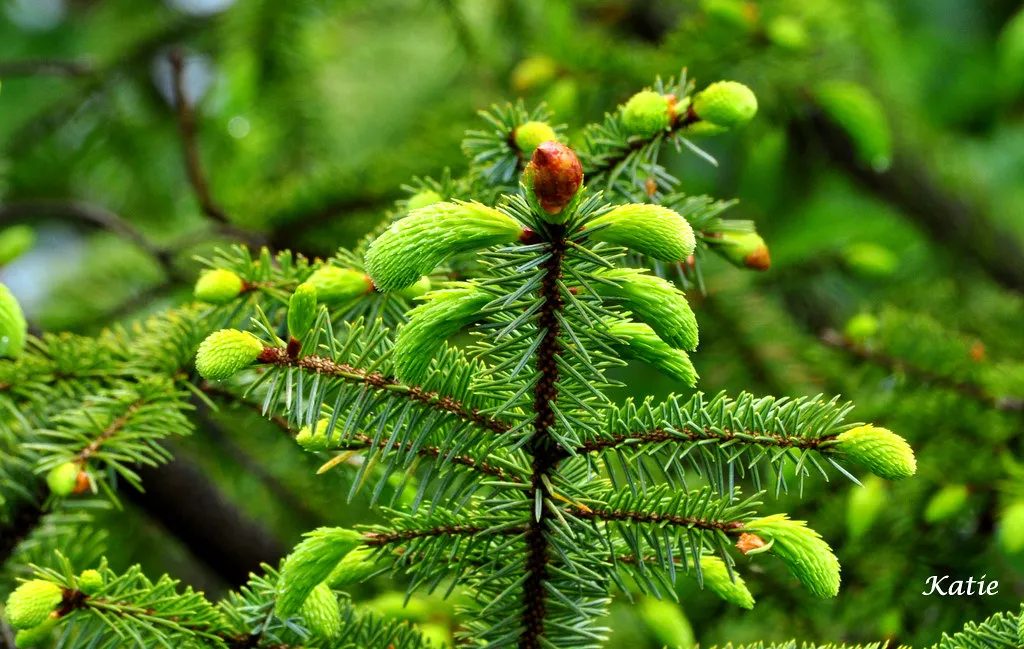The China Doll plant is a charming, compact houseplant known for its glossy leaves. It’s easy to grow and care for indoors.
The China Doll plant, scientifically known as Radermachera sinica, is a popular choice for indoor gardening enthusiasts. This delightful plant boasts shiny, dark green leaves that add a touch of elegance to any indoor space. Originating from the subtropical regions of China and Taiwan, the China Doll plant thrives in bright, indirect light and well-drained soil.
Its compact size makes it perfect for small living spaces or office desks. With proper care, including regular watering and occasional pruning, this plant can flourish and enhance the beauty of your home. Its low-maintenance nature makes it ideal for both novice and experienced gardeners.
Introduction To China Doll Plant
The China Doll Plant is a charming houseplant with delicate leaves. It’s perfect for adding a touch of greenery to any room. This plant is easy to care for and grows well indoors. Let’s dive into its origin, history, and popular varieties.
Origin And History
The China Doll Plant, also known as Radermachera sinica, is native to Asia. It originally comes from the forests of southern China and Taiwan. This plant was discovered in the late 19th century. It became popular in the west during the 1980s. Its lush foliage and compact size made it a favorite among indoor gardeners.
Popular Varieties
There are a few popular varieties of the China Doll Plant. Each variety has its own unique features:
- Radermachera sinica ‘Caprata’: Known for its smaller leaves.
- Radermachera sinica ‘Summerset’: Features a bushy growth habit.
- Radermachera sinica ‘Nanum’: This is a dwarf variety, perfect for small spaces.
These varieties add diversity to your indoor garden. Choose the one that fits your space and style best.

Credit: www.etsy.com
Ideal Growing Conditions
The China Doll Plant is a beautiful, easy-to-care-for houseplant. Creating the right environment ensures it thrives. Let’s dive into its ideal growing conditions for a happy and healthy plant.
Light Requirements
The China Doll Plant loves bright, indirect light. Avoid direct sunlight, which can scorch its leaves. Place it near a window with filtered light for the best results. Rotate the plant regularly for even growth.
Temperature And Humidity
Keeping the plant in a stable environment is crucial. It prefers temperatures between 65°F and 75°F (18°C to 24°C). Avoid drafts and sudden temperature changes. The plant thrives in humidity levels of 40% to 60%. If your home is dry, consider using a humidity tray or misting the plant regularly.
| Condition | Ideal Range |
|---|---|
| Temperature | 65°F to 75°F (18°C to 24°C) |
| Humidity | 40% to 60% |
Maintaining these conditions will ensure your China Doll Plant remains vibrant and lush. Happy growing!
Soil And Potting Tips
The China Doll Plant is a charming houseplant with delicate leaves. Proper soil and potting can ensure its healthy growth. Here are some essential tips to help you.
Best Soil Mix
The China Doll Plant thrives in well-draining soil. A mix of peat moss, perlite, and potting soil works best. Here is a simple recipe for the perfect soil mix:
- 2 parts peat moss
- 1 part perlite
- 1 part potting soil
This mix provides good aeration and retains the right amount of moisture.
Avoid heavy soils that retain too much water. This can lead to root rot.
Choosing The Right Pot
Selecting the right pot is crucial for the China Doll Plant. The pot should have drainage holes to prevent waterlogging.
| Pot Type | Description |
|---|---|
| Clay Pots | Allows air to reach the roots. Good for moisture control. |
| Plastic Pots | Lightweight and retains moisture. Good for dry climates. |
| Ceramic Pots | Decorative and sturdy. Ensure it has drainage holes. |
Choose a pot size that accommodates the root system. A pot that is too large can cause root rot. A small pot may restrict growth.
Repot the plant every 1-2 years to refresh the soil. This also gives the roots more space to grow.

Credit: www.amazon.com
Watering Guidelines
Caring for the adorable China Doll Plant involves understanding its water needs. Proper watering ensures healthy growth and vibrant foliage. Let’s dive into the key aspects of watering this delightful plant.
Frequency Of Watering
The China Doll Plant prefers a consistent watering schedule. Aim to water it every 7-10 days. The exact frequency depends on factors like temperature, humidity, and light levels. Always check the top inch of the soil. If it feels dry, it’s time to water.
| Condition | Watering Frequency |
|---|---|
| Hot and Dry | Every 5-7 days |
| Moderate Temperature | Every 7-10 days |
| Cool and Humid | Every 10-14 days |
Signs Of Overwatering
Overwatering can harm your China Doll Plant. Watch for these signs to prevent damage:
- Yellowing leaves
- Soft, mushy stems
- Foul odor from the soil
If you notice any of these signs, reduce watering immediately. Allow the soil to dry out before the next watering. Ensure the pot has drainage holes to prevent water from sitting at the bottom.
Feeding And Fertilization
Feeding your China Doll Plant is crucial for its growth. Proper fertilization ensures it remains lush and vibrant. Let’s explore the types of fertilizers and the ideal feeding schedule.
Types Of Fertilizers
Choosing the right fertilizer is essential. Here are some options:
- Liquid Fertilizers: Easy to apply and quickly absorbed by the plant.
- Granular Fertilizers: Long-lasting and slowly releases nutrients.
- Organic Fertilizers: Natural and eco-friendly, promoting healthy soil.
- Balanced Fertilizers: Contains equal parts of nitrogen, phosphorus, and potassium.
Feeding Schedule
Maintaining a proper feeding schedule is key for a healthy plant. Follow this guide:
| Season | Frequency | Fertilizer Type |
|---|---|---|
| Spring | Every 2 weeks | Liquid Fertilizer |
| Summer | Every 3 weeks | Balanced Fertilizer |
| Fall | Monthly | Granular Fertilizer |
| Winter | Every 6 weeks | Organic Fertilizer |
Always dilute the fertilizer as per instructions. Over-fertilizing can harm the plant.

Credit: www.amazon.com
Pruning And Maintenance
The China Doll plant, also known as Radermachera sinica, is a delightful houseplant. It requires regular pruning and maintenance to stay healthy and attractive. Proper pruning ensures the plant remains compact and lush. Let’s explore the best ways to prune and maintain this beautiful plant.
How To Prune
Pruning your China Doll plant is essential for its health. Follow these steps for effective pruning:
- Use clean, sharp scissors or pruning shears.
- Remove any dead or yellow leaves.
- Cut back stems that are too long or growing unevenly.
- Trim just above a leaf node to encourage new growth.
- Prune regularly to maintain the plant’s shape.
Pruning helps the plant grow more vigorously. It prevents the plant from becoming leggy and unsightly.
Dealing With Leggy Growth
Leggy growth occurs when the plant stretches out. This is usually due to insufficient light. Here are some tips to manage leggy growth:
- Place the plant in a spot with bright, indirect light.
- Rotate the plant regularly for even growth.
- Prune back the leggy stems to encourage bushier growth.
- Ensure the plant is not too close to heating sources.
- Feed the plant with balanced fertilizer to boost its health.
By following these tips, you can keep your China Doll plant looking full and vibrant.
Common Pests And Diseases
The China Doll Plant is beautiful but can attract pests and diseases. Knowing how to spot these issues early is key to keeping your plant healthy. This section helps you identify common pests and diseases and offers tips for prevention.
Identifying Pests
The most common pests for the China Doll Plant include spider mites, aphids, and mealybugs. These pests can cause significant damage if not controlled.
- Spider Mites: Tiny, red or brown insects. Look for webbing on leaves.
- Aphids: Small, green or black insects. They cluster on new growth.
- Mealybugs: White, cotton-like insects. Found on stems and leaves.
To treat these pests, use insecticidal soap or neem oil. Ensure you cover all plant surfaces.
Disease Prevention
Disease prevention starts with proper care. Overwatering and poor air circulation can lead to fungal infections.
| Disease | Symptoms | Prevention |
|---|---|---|
| Root Rot | Yellow leaves, mushy roots | Water less often, ensure good drainage |
| Powdery Mildew | White powder on leaves | Improve air circulation, avoid overhead watering |
Using sterile tools and removing infected leaves can also help. Always keep an eye on your plant’s health.
Propagation Methods
Growing and caring for the charming China Doll Plant can be quite rewarding. Whether you are a seasoned gardener or a beginner, propagating this lovely plant is an exciting journey. In this section, we will explore the various methods to propagate your China Doll Plant successfully.
Stem Cuttings
One of the most common methods to propagate the China Doll Plant is through stem cuttings. Follow these simple steps:
- Select a healthy stem with at least two leaves.
- Use clean, sharp scissors to cut just below a node.
- Remove the lower leaves, leaving the top two intact.
- Dip the cut end in rooting hormone powder.
- Plant the cutting in a pot with moist, well-draining soil.
- Cover the pot with a plastic bag to retain humidity.
- Place the pot in a warm, bright spot but avoid direct sunlight.
After a few weeks, roots should develop. You can then transplant the new plant into a larger pot.
Seed Propagation
Growing China Doll Plants from seeds is another effective method. Here’s how to do it:
- Purchase fresh seeds from a reputable supplier.
- Fill a seed tray with a seed-starting mix.
- Sprinkle the seeds evenly over the soil surface.
- Lightly cover the seeds with a thin layer of soil.
- Water the soil gently to keep it moist.
- Place the seed tray in a warm, bright location.
Keep the soil moist but not waterlogged. In about 2-3 weeks, you should see seedlings emerging. Once the seedlings have a few true leaves, transplant them into individual pots.
Both methods are effective and can bring you joy as you watch your China Doll Plant grow. Choose the method that best suits your gardening style and enjoy the process!
Seasonal Care Tips
Caring for your China Doll Plant requires understanding its seasonal needs. Each season brings unique challenges and opportunities. Proper care ensures your plant stays healthy and vibrant year-round.
Winter Care
During winter, the China Doll Plant needs extra attention. It is sensitive to cold temperatures.
- Temperature: Keep the plant in a room with temperatures between 60-75°F.
- Light: Place the plant in a spot with bright, indirect sunlight.
- Watering: Water the plant sparingly. Make sure the soil is slightly dry before watering again.
- Humidity: Increase humidity around the plant. Use a humidifier or a pebble tray.
- Fertilizing: Do not fertilize the plant in winter. It is in a dormant phase.
Summer Care
In summer, your China Doll Plant thrives with a bit more care. The warm weather promotes growth.
- Temperature: Maintain temperatures between 70-85°F. Avoid drafts and sudden temperature changes.
- Light: Provide bright, indirect light. Too much direct sunlight can scorch the leaves.
- Watering: Water more frequently in summer. Ensure the soil remains consistently moist but not waterlogged.
- Humidity: Maintain high humidity. Mist the leaves regularly or use a humidifier.
- Fertilizing: Fertilize once a month with a balanced, water-soluble fertilizer.
Troubleshooting Common Issues
Growing a China Doll plant can be rewarding. But sometimes, issues arise. This section helps you identify and fix common problems. Let’s dive into yellowing leaves and drooping stems.
Yellowing Leaves
Yellowing leaves on a China Doll plant often signal a problem. Overwatering is a frequent cause. Ensure the soil is well-draining. Use a pot with drainage holes. Water only when the top inch of soil is dry.
Underwatering may also cause yellow leaves. Check the soil regularly. If dry, water your plant. Keep a consistent watering schedule.
Nutrient deficiency can lead to yellow leaves. Feed your plant with balanced fertilizer. Follow the recommended dosage. Over-fertilizing can harm the plant.
Drooping Stems
Drooping stems often indicate lack of light. Place your China Doll plant in bright, indirect sunlight. Rotate the plant weekly. This helps even growth.
Overwatering can also cause drooping stems. Wet roots lack oxygen, causing stress. Ensure your pot drains well. Avoid letting the plant sit in water.
Pests like spider mites can weaken stems. Check the plant regularly for pests. Use insecticidal soap if needed. Keep the plant clean and healthy.
Frequently Asked Questions
What Is A China Doll Plant?
A China Doll plant is a lush, green houseplant known for its delicate, fern-like leaves. It thrives indoors.
How Do You Care For China Doll Plants?
China Doll plants need bright, indirect sunlight and well-draining soil. Water them when the topsoil is dry.
Why Are The Leaves Of My China Doll Plant Falling Off?
Leaves may fall due to sudden temperature changes, overwatering, or low light. Ensure stable conditions and proper care.
Can China Doll Plants Grow Outdoors?
China Doll plants can grow outdoors in warm, tropical climates. They prefer partial shade and consistent moisture.
Conclusion
Caring for the China Doll plant can be rewarding and fun. With proper attention, it thrives beautifully. Remember to provide bright, indirect light and maintain soil moisture. Regular pruning helps keep it compact and healthy. Embrace the joy of nurturing this delightful plant and enjoy its vibrant greenery in your home.



